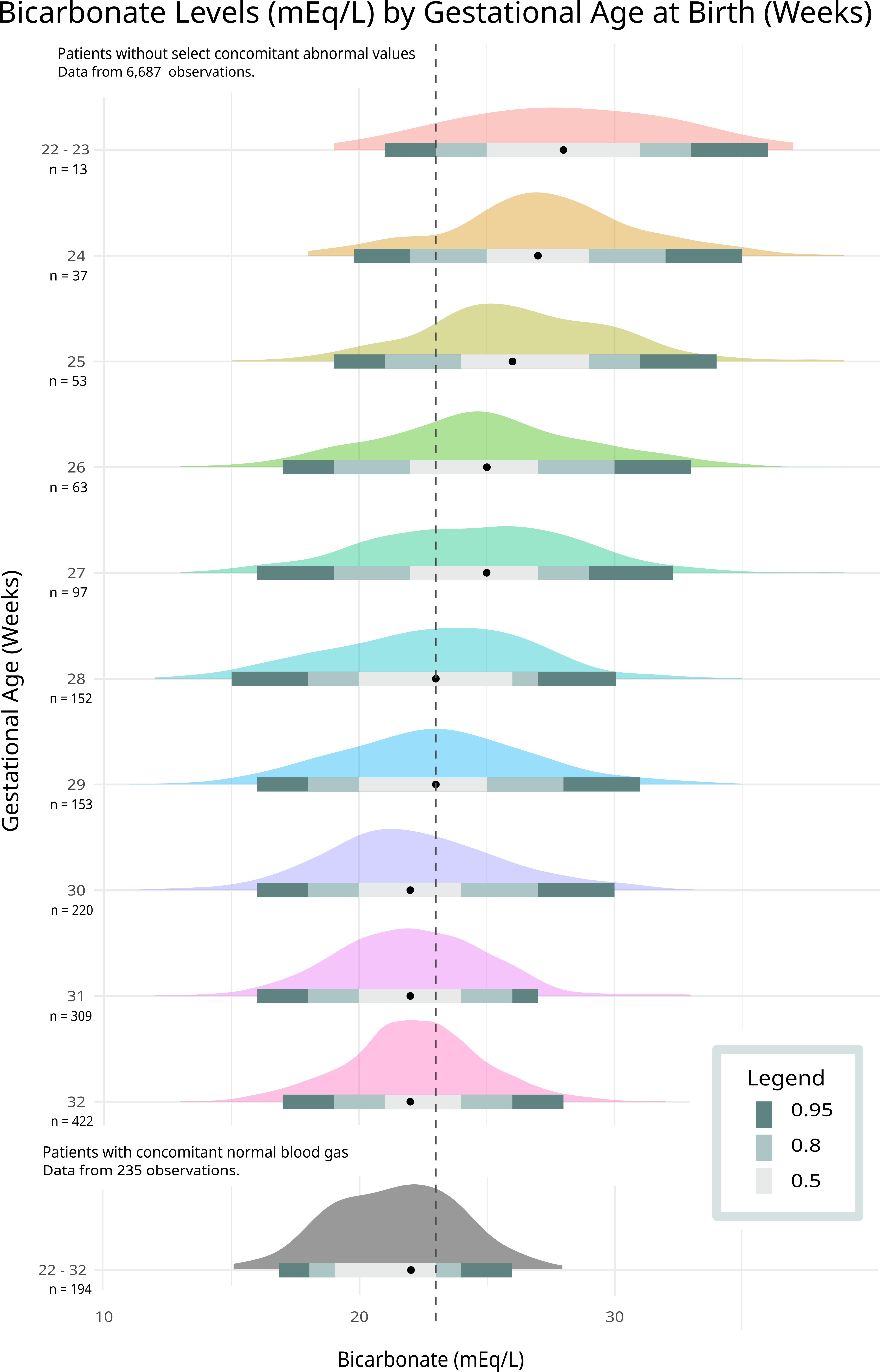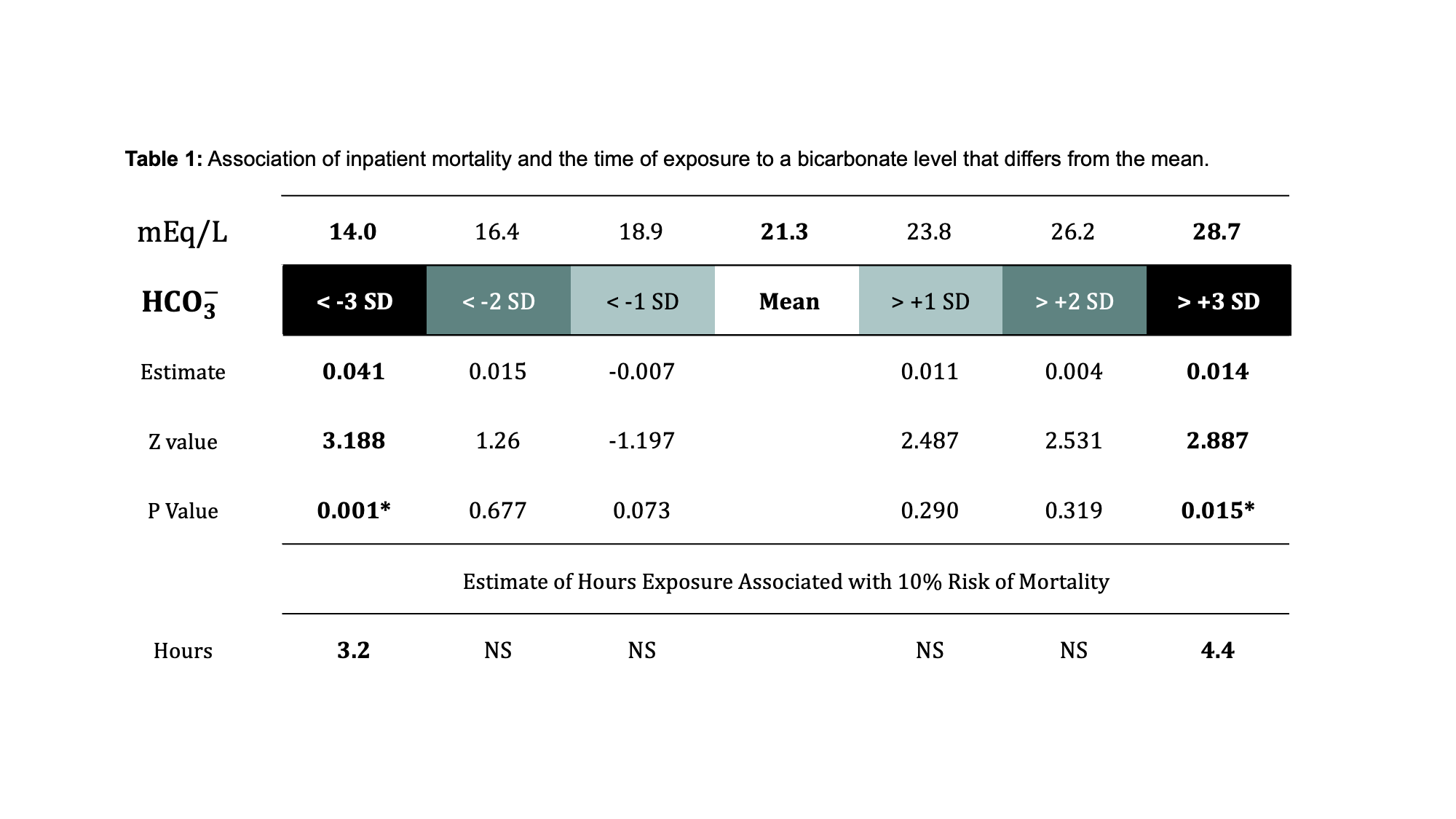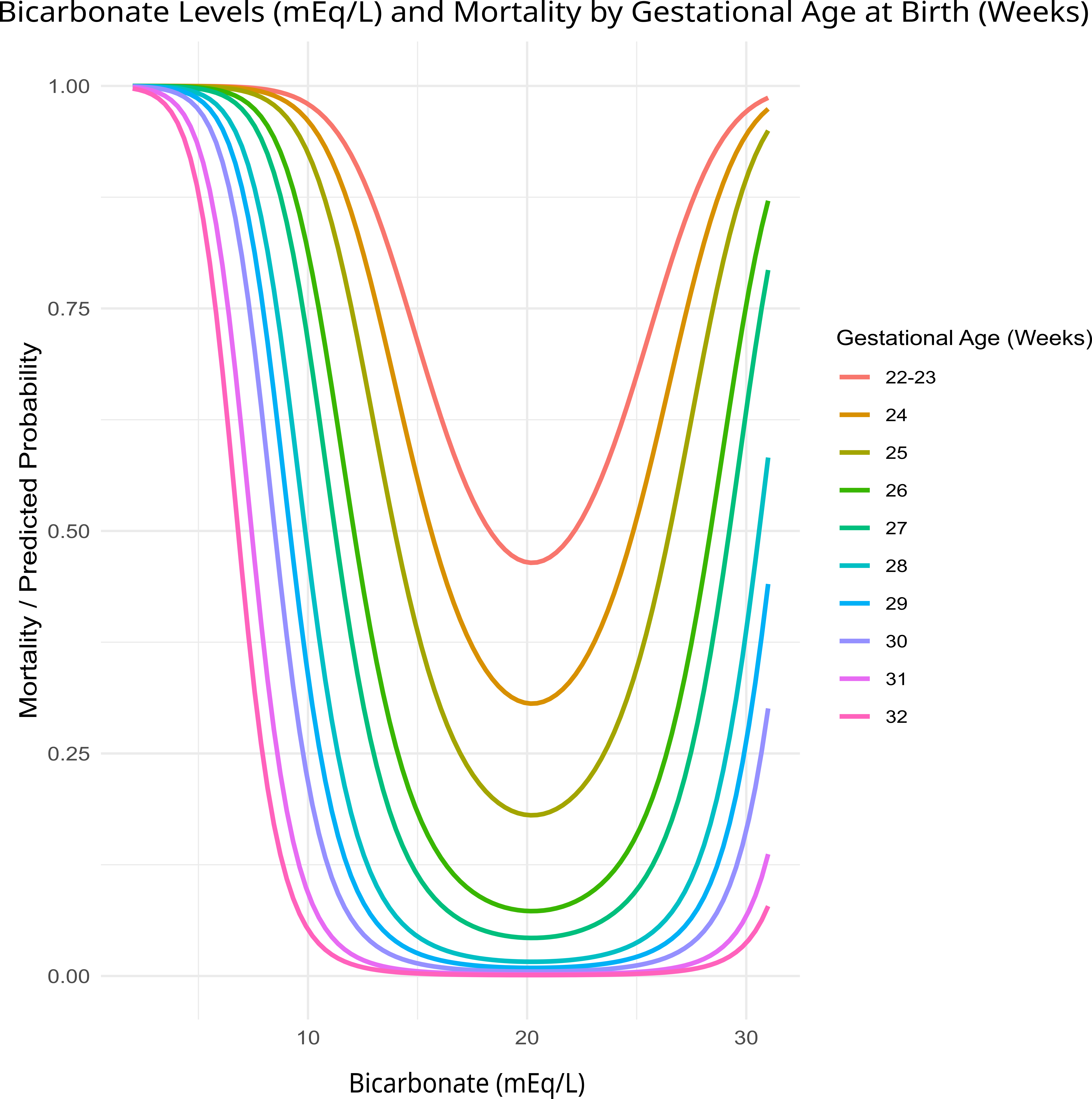Neonatal General 11
Session: Neonatal General 11
417 - Clinically Meaningful: Establishing a Normal Range for Bicarbonate in Preterm Infants Using Real World Data
Monday, April 28, 2025
7:00am - 9:15am HST
Publication Number: 417.4387
Spencer Millen, Ann & Robert H. Lurie Children's Hospital of Chicago, 469 W Huron St, IL, United States; Alexander J. Kula, Ann & Robert H. Lurie Children's Hospital of Chicago, Chicago, IL, United States; Gustave Falciglia, Northwestern University Feinberg School of Medicine, Chicago, IL, United States; Karna Murthy, Ann & Robert H. Lurie Children's Hospital of Chicago, Chicago, IL, United States
- SM
Spencer Millen, MD (he/him/his)
Neonatology Fellow
Ann & Robert H. Lurie Children's Hospital of Chicago
469 W Huron St, Illinois, United States
Presenting Author(s)
Background: The Harriet Lane Handbook (Ed. 23) lists a lower limit of acceptable values of measured bicarbonate as 5 mEq/L in the first two weeks of life. This report attempts to validate these published reference values for a preterm population.
Objective: To characterize the acid-base status of neonates and estimate its independent association with inpatient mortality.
Design/Methods: We identified preterm infants born < 33 weeks’ gestation and their lab results from our Level III NICU from 2018-2024. Infants who died prior to lab testing were omitted. The two main outcomes were (1) descriptive characterization of HCO₃⁻/total CO₂ levels, and (2) mortality. A normative range was calculated using lab results with concurrent normal pH and pCO₂ during a 24-hour period without recorded abnormalities in pH, pCO2, lactate, Na⁺, K⁺, and creatinine. Unadjusted and multivariable logistic regression quantified the relationship between HCO₃⁻ levels and mortality. Multivariable adjustment used principal component analysis and included gestational age, sex, Apgar score, and birthweight. k-Nearest Neighbors, optimized through cross-validation, was used to predict missing Apgar scores based on demographics, cord blood pH, and documented mechanical ventilation within the first 6 hours of life.
Results: There were 1519 patients accounting for 6,687 individual bicarbonate measurements taken in a 24-hour period without selected laboratory abnormalities (Figure 1). A total of 235 measurements were taken within 1 hour of a normal pH and pCO2 (Figure 1, HCO₃⁻ Mean 21.3 mEq/L, SD = 2.45). As expected, increased exposure to low HCO₃⁻ values in the first week of life was positively associated with an increased risk of mortality. For every 3.2 hours of exposure to a HCO₃⁻ level < 3 SD ( < 14.0 mEq/L), the associated risk of inpatient mortality rose by 10%. However, this relationship is non-monotonic. A similar mortality association was found for every 4.4 hours of exposure to HCO₃⁻ > 3 SD (> 28.7 mEq/L). To demonstrate the U-shaped relationship of this continuous variable, a quadratic transformation was applied, which demonstrated superior fit (p < 0.001) as compared with the traditional linear relationship (p = 0.573). These associations persisted in multivariable analysis (p = 0.001). The HCO₃⁻ value associated with the minimum mortality risk was 21.2 mEq/L in the first week of life.
Conclusion(s): These data provide updated reference values more consistent with pediatric normative values. While this data is not prospective, it provides a large sample size and a corresponding clinical outcome to demonstrate relevance to clinical practice.
Figure 1: Distribution of measured bicarbonate (Total CO2) for 1519 patients born < 33 weeks gestation.
 Measurements of bicarbonate were recorded throughout a patient’s NICU admission. Each included measurement occurred without a recorded abnormal Na+, K+, pCO2, pH, creatinine, or elevated Lactate within 12 hours before or after. The legend denotes 50th, 80th, and 95th percentile distribution of lab values. 235 measurements from 194 patients had a bicarbonate measurement within 1 hour of a normal blood gas. The distribution of this restrictive inclusion criteria is displayed in grey.
Measurements of bicarbonate were recorded throughout a patient’s NICU admission. Each included measurement occurred without a recorded abnormal Na+, K+, pCO2, pH, creatinine, or elevated Lactate within 12 hours before or after. The legend denotes 50th, 80th, and 95th percentile distribution of lab values. 235 measurements from 194 patients had a bicarbonate measurement within 1 hour of a normal blood gas. The distribution of this restrictive inclusion criteria is displayed in grey.Table 1: Association of inpatient mortality and the time of exposure to a bicarbonate level that differs from the mean.
 Each hour of life above or below the designated threshold was tallied representing the estimated time of exposure. The univariate logistic regression compared hours of exposure to inpatient mortality. (NS, Non-significant)
Each hour of life above or below the designated threshold was tallied representing the estimated time of exposure. The univariate logistic regression compared hours of exposure to inpatient mortality. (NS, Non-significant)Figure 2: Association of inpatient mortality and abnormal measured bicarbonate in the first week of life for infants born < 33 weeks gestation (GA).
 A quadratic transformation was applied to allow appropriate fit. Principal component analysis consisted of gestational age, sex, birthweight, and Apgar score. Using this multivariable, generalized quadratic model, the associated mortality was estimated with simulated bicarbonate values and gestational age. The HCO₃⁻ value associated with the minimum inpatient mortality risk is 21.2 mEq/L.
A quadratic transformation was applied to allow appropriate fit. Principal component analysis consisted of gestational age, sex, birthweight, and Apgar score. Using this multivariable, generalized quadratic model, the associated mortality was estimated with simulated bicarbonate values and gestational age. The HCO₃⁻ value associated with the minimum inpatient mortality risk is 21.2 mEq/L. 
